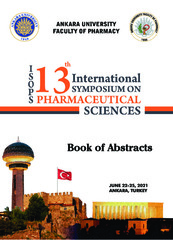Приказ основних података о документу
Chemometrically supported optimization of RP/WCX-HPLC method
| dc.creator | Svrkota, Bojana | |
| dc.creator | Krmar, Jovana | |
| dc.creator | Đajić, Nevena | |
| dc.creator | Protić, Ana | |
| dc.creator | Otašević, Biljana | |
| dc.date.accessioned | 2023-05-05T11:55:19Z | |
| dc.date.available | 2023-05-05T11:55:19Z | |
| dc.date.issued | 2022 | |
| dc.identifier.isbn | 978-605-136-537-4 | |
| dc.identifier.uri | https://farfar.pharmacy.bg.ac.rs/handle/123456789/4692 | |
| dc.description.abstract | Introduction: Active pharmaceutical ingredients (APIs) are often used in salt form, which is why the inclusion of weak cation exchange (WCX), in addition to reverse-phased (RP) hydrophobic interactions, could improve APIs’ separation (1). Due to the limited knowledge about the RP/WCX bimodal system, the aim was to elucidate the experimental factors’ influence on the retention of diverse ionized APIs, and provide efficient method optimization. Materials and Methods: Acidic (ibuprofen (IB), aceclofenac (AC)) and basic (escitalopram (ES), aripiprazole (AR), atomoxetine (AT)) analytes were tested. Chromatography experiments were performed on Thermo Acclaim Mixed Mode WCX- 1 (5 μm, 3x10 mm) column. Mobile phase consisted of ACN (30-50% (v/v)) and acetic buffer (pH 3.8 - 5.6; ionic strength (I) 20-40 mM). Temperature (T) was varied in range 30–38 °C. Variations of these factors were conducted according to Full Factorial Design 24. Optimization phase was executed by using face-centered Central Composite Design (Design-Expert 7.0.0). Results: Screening results showed that %ACN had the greatest impact on analytes’ retention factors (k), so increasing in %ACN caused a decrease in k. T had the same effect, but much less pronounced. Changes in mobile phase pH affected k, with the opposite effect on anionic and cationic species. This is attributed to greater ionization of stationary phases’ carboxylic groups at higher pH. As consequence, repulsive interactions with anionic and attractive interactions with the cationic analytes, are enhanced, vice versa (2). Ionic strength had much more influence on cationic analytes than on anionic ones. Due to all the above, all of four factors were included during optimization phase. Optimization goals were set so that k values were in range 1–10 (k(AR)<10, k(AC)>10, k(IB) in range) and selectivity of critical peak pair α(AT/ES)>1.3. All derived mathematical models were statistically estimated (R2, adj. R2, pred. R2>0.95). Set of optimal conditions which is 47% (v/v) ACN, acetic buffer (40 mМ, pH 3.8) and temperature 30 °C was determined using Derringer’s desirability function. Conclusions: Experimental parameters with significant influence on retention in bimodal RP/WCX system were evaluated, and upon that method was successfully optimized. | sr |
| dc.language.iso | en | sr |
| dc.publisher | Ankara University Faculty of Pharmacy | sr |
| dc.relation | info:eu-repo/grantAgreement/MESTD/inst-2020/200161/RS// | |
| dc.rights | openAccess | sr |
| dc.source | 13th International Symposium on Pharmaceutical Sciences (ISOPS), June 22-25, 2021, Ankara, Turkey | sr |
| dc.title | Chemometrically supported optimization of RP/WCX-HPLC method | sr |
| dc.type | conferenceObject | sr |
| dc.rights.license | ARR | sr |
| dc.citation.spage | 228 | |
| dc.citation.epage | 229 | |
| dc.description.other | ISOPS 13, Abstract Book | |
| dc.identifier.fulltext | http://farfar.pharmacy.bg.ac.rs/bitstream/id/12731/Chemometrically_supported_optimization_pub_2021.pdf | |
| dc.identifier.rcub | https://hdl.handle.net/21.15107/rcub_farfar_4692 | |
| dc.type.version | publishedVersion | sr |

